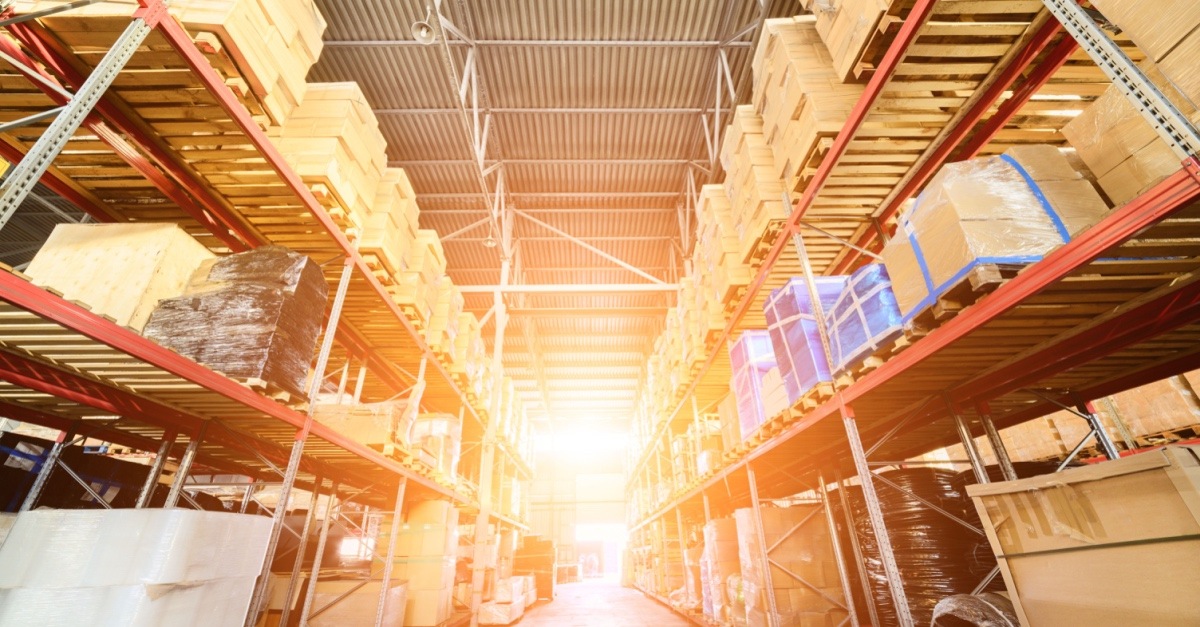3 min read
3PL Warehousing for Household Goods: Tactics for Effective Inventory Management
3PL warehousing has proven to be an invaluable asset for companies across industries who find that the key functions of logistics and transportation...
Business-to-business (B2B) fulfillment for retail is a very involved operation for brands and manufacturers. In many cases, companies are fulfilling their own orders into DTC and marketplaces as well, so things can get tricky in a hurry when trying to manage omnichannel operations. And if some retailers require high volumes of kitting and assembly of goods, another layer of complexity is added to the mix. This is why more and more brands and manufacturers are opting to work with a 3PL service provider with decades of experience in executing B2B and omnichannel fulfillment.
Increasingly, B2B is following B2C into e-commerce. According to the latest figures from DigitalCommerce360, while overall U.S. B2B sales were flat in 2023 at $14.87 trillion, B2B e-commerce grew 17%. This is yet another capability that B2B companies need to master.
Because B2B fulfillment is complex, having the right 3PL partner makes all the difference. For maximum efficiency, convenience, and simplicity, consider seeking a 3PL service provider that offers an integrated approach combining inbound and outbound logistics as well as omnichannel services. We’ll explain more below.
The challenges of B2B order fulfillment are varied. They include managing complex inventory and large order volumes, both maintaining as well as having variable staffing levels, in some instances handling bulky or hazardous goods, hitting strict delivery SLAs, and meeting regulatory requirements. All of this demands sophisticated logistics, precise coordination, and robust supply chain management to meet customer requirements in an efficient manner.
Finding sufficient labor to meet the demands of B2B fulfillment is a perennial issue. It is typically a high churn position due to the wage level and physical demands of the work. The retention ratio can be as high as 10:1, meaning hiring 10 warehouse associates to get one who sticks with the job. It’s even more difficult if a business depends on the Q4 peak season, when demand is high and order volumes increase significantly.
Because employee churn is so high, many B2B fulfillment centers rely on agencies to meet their labor needs throughout the year. But, an over-reliance on agency labor can be problematic as well. Temp workers are generally not invested in what is typically highly repetitive work. Many companies have leaned heavily on the temp model to match labor costs with expenses in a tight economy. But productivity often suffers as a result, wiping out any gains.
Inventory management for B2B fulfillment has been going through an interesting evolution. Lean principles call for a “just in time” (JIT) approach: keeping enough inventory on hand to handle current orders, and maintaining low safety stock levels, thus keeping down carrying costs. However, the e-commerce explosion precipitated by the pandemic shutdowns in 2021 led everyone to flip to a “just in case” (JIC) model, over-ordering due to the uncertainty of supply. Vast overstock levels resulted, and a long process of trimming inventory began in what became known as the “bullwhip effect.” With demand down, JIT has come back into vogue.
With these swings back and forth and forecasting trickier than ever due to disruptions and consumer spending levels, inventory management today takes next-level thinking, strategy, and tools to get right.
While B2B fulfillment might seem inherently more efficient due to handling bulk orders vs. eaches or onesie-twosie lines for B2C, there are still many variables to consider. Are you pulling case picks or carton picks or pallets, or alternating between them? In kitting and assembly, are you table-batching orders or using single-piece flow (SPF)? When does each make the most sense, given your workforce and capabilities, equipment (including automation), and customer requirements?
As B2B orders involve larger volumes and the size of products, fulfillment requires more sophisticated logistics and greater storage capacity. The warehouse layout, including the optimal location of forward picking and bulk storage in relation to pick/pack stations, is crucial. There can also be wide variance in order lead times, making it difficult to work out the timing of different production runs as well as inventory planning.
Many B2B orders require special configurations or other types of customization, adding complexity to fulfillment, increasing the cost per order (CPU), and slowing down throughput levels. Packaging and handling — especially for bulky, heavy, or hazardous items — call for different processes and add to costs.
Retailers have very specific, detailed guidelines covering all aspects of fulfillment and distribution, including packaging, transportation and delivery, and inventory management. Suppliers need to be
For example, a retailer’s packaging requirements are very detailed in terms of dimensions, labeling, and branding. Kohl’s 48-page packaging and labeling guide includes everything from specific instructions on packing (one SKU per box), GS1 labeling, and how ASNs are to be transmitted. Products also need to be configured in such a way as to optimize shelf and display space and ensure proper presentation.
Routing guides covering how orders are to be shipped are also very detailed and must be adhered to exactly. Issues of noncompliance result in chargebacks or reimbursement for expenses. For instance, suppliers for Barnes & Noble college bookstores can be penalized for things like overweight cartons, using an unapproved carrier, or making an unauthorized expedited shipment.
On-time/in-full (OTIF) shipping requirements have become commonplace since Walmart first instituted them in 2017 for all suppliers. While making for smoother supply chain flow and replenishment for retailers, adherence is another burden for suppliers that comes with fees for noncompliance.
Kitting and assembly involve combining individual items into ready-to-ship packages or assembled products. It streamlines order fulfillment, reduces shipping errors, and improves efficiency by pre-assembling products or components based on order forecasts.
All kinds of mechanics and process planning go into setting up a kitting and assembly operation in the most efficient manner possible. As mentioned above, deciding between table batching orders and SPF via conveyor is a key consideration that will affect performance, throughput, and cost per unit (CPU). Which one has the most benefits in reducing the error rate and rework?
Selecting the right 3PL to manage your B2B fulfillment requires due diligence not only into the numbers but also if their culture fits your business and how you operate. Metrics like customer count, retention rate, and the types of major clients they serve provide valuable insights to help you gauge their strengths and suitability.
A 3PL’s ability to consistently hit KPIs is, of course, a major consideration when vetting. Their throughput capacity is another, especially in a multi-tenant facility. How well can they scale their operations up and down, based on changing customer demand and market conditions?
If kitting and assembly are required, what’s their track record there? What is their error or rework rate? What kind of process do they use? How long have they offered those services? For what kinds of businesses? What other kinds of value-added services are available?
Do they have a substantial warehouse network with sufficient nationwide coverage to enable faster transit times? What about transportation services? Is their carrier network broad and deep enough to meet your needs? Do they offer optimized carrier selection or access to volume discounts to save on costs?
Do they take an integrated approach, offering a single-source capability that handles both inbound and outbound logistics in an omnichannel model? Do they employ lean production principles and continuous improvement processes?
Is their workforce trained, capable, and motivated? Or are they relying heavily on temp staff, who tend to be less dependable and productive?
Again, cultural fit is important, and an often overlooked factor. How engaged are their executives? Is there a culture of accountability from the top down? Are they a massive conglomerate with a cookie-cutter approach, or do they provide high-touch communication and transparency? When management is unengaged, it can feel like bureaucracy. And unengaged leadership leads to delays.
How does all of this translate into customer satisfaction rates? Go beyond their reference clients and talk to executives at businesses that are comparable to your own.
Productiv, a 3PL specializing in omnichannel distribution and a range of value-added services, excels at labor-intensive projects leveraging our highly qualified associates. With an unmatched record of service excellence and customer satisfaction, we can operate as an embedded team in your facilities or out of our own warehouse network.
In kitting and assembly environments, Productiv utilizes SPF and a highly efficient production process engineered to maximize performance and throughput while keeping down the cost per unit. We also have a high level of experience in retail fulfillment, with a working knowledge of compliance requirements and routing guides at more than 60 major retailers.
Productiv is also a leader in innovation and technology, employing AI-based predictive analytics for forecasting and replenishment, helping retailers and brands sync production and inventory levels. AI is also used to optimize carrier selection and routing, while cutting-edge BI tools provide insights into customer behavior and market trends and highlight ways to improve operational efficiency.
Finally, our leadership team is highly engaged and invested in every client. Taking a servant leader approach, all team members are incentivized based on client success and positive outcomes. To learn more about how you can benefit in your B2B fulfillment operations, talk to an expert at Productiv today.
Get ideas on how to delight your customers with delivery on their timeline.

3 min read
3PL warehousing has proven to be an invaluable asset for companies across industries who find that the key functions of logistics and transportation...

1 min read
Strategic location meets need for fast delivery for eastern U.S. customers Richmond, VA - July 10, 2019 - Productiv, a national leader in ecommerce...

5 min read
The health and beauty industry is a highly competitive market, with a huge range of products, endless variations within SKUs (color, size, style,...
